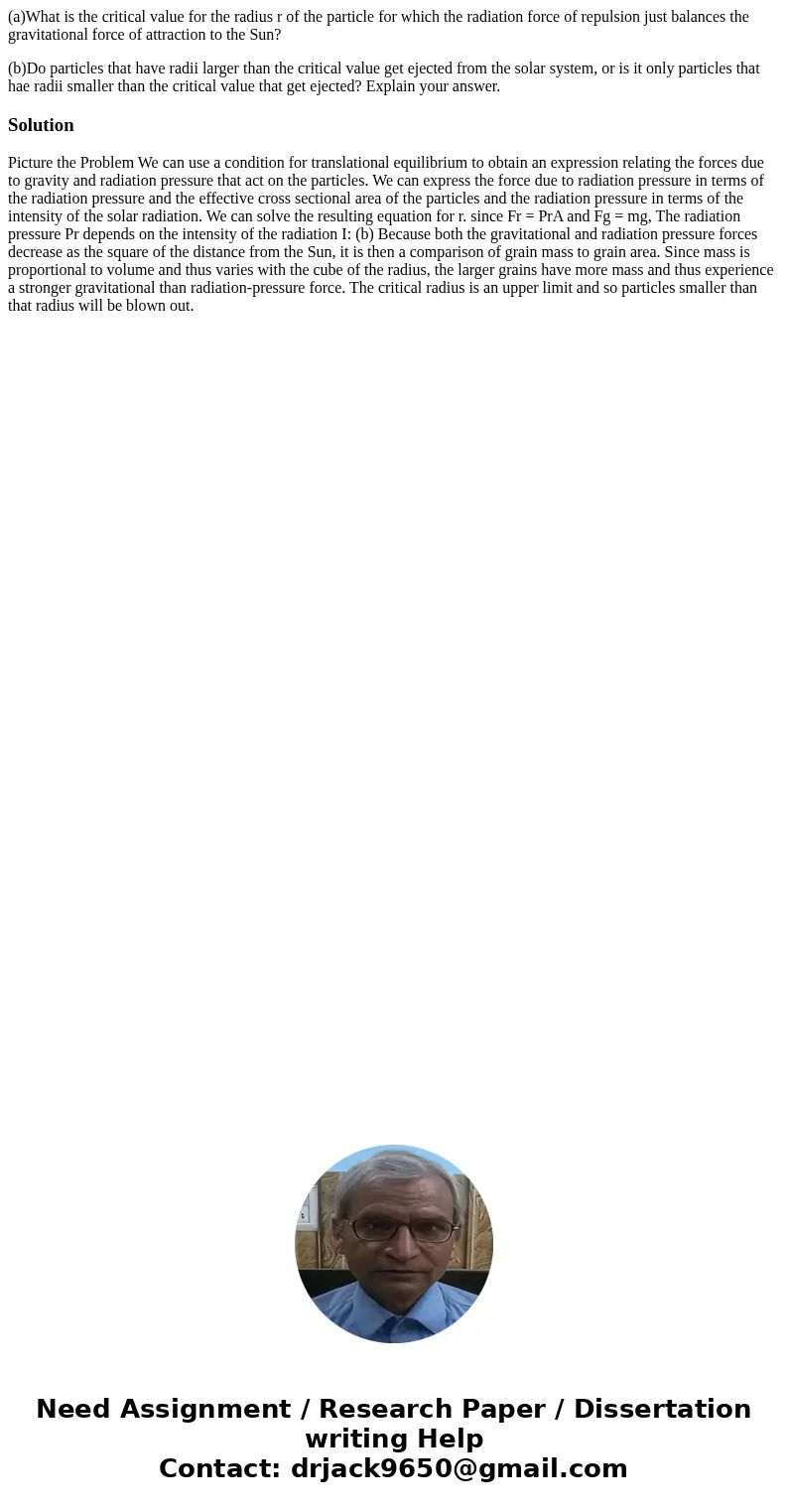aWhat is the critical value for the radius r of the particle
(a)What is the critical value for the radius r of the particle for which the radiation force of repulsion just balances the gravitational force of attraction to the Sun?
(b)Do particles that have radii larger than the critical value get ejected from the solar system, or is it only particles that hae radii smaller than the critical value that get ejected? Explain your answer.
Solution
Picture the Problem We can use a condition for translational equilibrium to obtain an expression relating the forces due to gravity and radiation pressure that act on the particles. We can express the force due to radiation pressure in terms of the radiation pressure and the effective cross sectional area of the particles and the radiation pressure in terms of the intensity of the solar radiation. We can solve the resulting equation for r. since Fr = PrA and Fg = mg, The radiation pressure Pr depends on the intensity of the radiation I: (b) Because both the gravitational and radiation pressure forces decrease as the square of the distance from the Sun, it is then a comparison of grain mass to grain area. Since mass is proportional to volume and thus varies with the cube of the radius, the larger grains have more mass and thus experience a stronger gravitational than radiation-pressure force. The critical radius is an upper limit and so particles smaller than that radius will be blown out.
 Homework Sourse
Homework Sourse